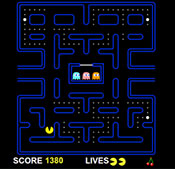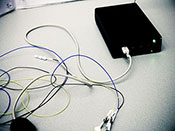 Neurofeedback is a rapidly growing treatment for attention, behavior, and learning disorders. Research has shown it to be as effective as stimulant medication, without the side effects. Also known as EEG biofeedback or brainwave biofeedback, this technique follows a learning or operant conditioning model, rather than a pharmacological one. It can be used as an adjunct to medication or as a gradual replacement for it, depending upon the circumstance of an individual case. All forms of biofeedback involve training people to regulate their own physiology. Much like physical therapy is used to strengthen muscles and extend their range of motion, brainwave biofeedback uses a series of instrument assisted training sessions over several weeks or months to help a person gain greater control and flexibility in the neuroelectrical aspects of their brain functions. This control then permits improvement in their mental and behavioral functions. The neurotherapist acts as a teacher and coach, setting successively higher goals of performance as the trainee progresses.
Neurofeedback is a rapidly growing treatment for attention, behavior, and learning disorders. Research has shown it to be as effective as stimulant medication, without the side effects. Also known as EEG biofeedback or brainwave biofeedback, this technique follows a learning or operant conditioning model, rather than a pharmacological one. It can be used as an adjunct to medication or as a gradual replacement for it, depending upon the circumstance of an individual case. All forms of biofeedback involve training people to regulate their own physiology. Much like physical therapy is used to strengthen muscles and extend their range of motion, brainwave biofeedback uses a series of instrument assisted training sessions over several weeks or months to help a person gain greater control and flexibility in the neuroelectrical aspects of their brain functions. This control then permits improvement in their mental and behavioral functions. The neurotherapist acts as a teacher and coach, setting successively higher goals of performance as the trainee progresses.
Over 20 years of EEG studies have shown that most attention and learning disorders, as well as behavioral problems such as hyperactivity and impulsivity, are associated with slow brainwave activity and underarousal of the central nervous system. This is why stimulant medication often helps these conditions. Slow brainwaves (called alpha, theta, or delta) are dominant when one is resting, daydreaming, or falling asleep. But in children with ADD or ADHD, slow brainwaves appear to be dominant to the faster (beta) brainwaves that are associated with alertness, problem-solving, reading, and performing tasks.
 If children with ADD/ADHD are asked to read while they are hooked up to an EEG, their brainwaves slow down rather than speed up into the beta range that is required for concentration and attention. Neurofeedback addresses this imbalance by using high-speed computers interfaced with an EEG instrument to monitor and “feed back” an ADD/ADHD child’s brainwave activity to them. This is done while the child sits in front of the computer with EEG sensors attached harmlessly to their scalp. The computer converts the brainwave signal picked up by the sensors to an easily understood audio feedback tone or visual display on the computer screen. This feedback information tells the child when he or she is speeding up or slowing down their brainwaves in the direction needed for better learning and concentration or better sensorimotor and behavior control. The feedback to the child is often provided in the form of a computer game. For example, the PAC MAN game is won by keeping their beta brainwave signal above the training threshold set for that session. By progressively raising or lowering the training thresholds, the neurotherapist helps the child move toward greater mastery and control of their brainwaves and consequent central nervous system arousal level. Progress in neurofeedback sessions is reflected in observable improvements in the child’s attention to task, in class performance, learning ability, and behavioral self-control.
If children with ADD/ADHD are asked to read while they are hooked up to an EEG, their brainwaves slow down rather than speed up into the beta range that is required for concentration and attention. Neurofeedback addresses this imbalance by using high-speed computers interfaced with an EEG instrument to monitor and “feed back” an ADD/ADHD child’s brainwave activity to them. This is done while the child sits in front of the computer with EEG sensors attached harmlessly to their scalp. The computer converts the brainwave signal picked up by the sensors to an easily understood audio feedback tone or visual display on the computer screen. This feedback information tells the child when he or she is speeding up or slowing down their brainwaves in the direction needed for better learning and concentration or better sensorimotor and behavior control. The feedback to the child is often provided in the form of a computer game. For example, the PAC MAN game is won by keeping their beta brainwave signal above the training threshold set for that session. By progressively raising or lowering the training thresholds, the neurotherapist helps the child move toward greater mastery and control of their brainwaves and consequent central nervous system arousal level. Progress in neurofeedback sessions is reflected in observable improvements in the child’s attention to task, in class performance, learning ability, and behavioral self-control.
 Most children acquire good self-regulation skill in around 40 to 60 bi- or tri-weekly training sessions. Children with greater neurological dysfunction, more developmental delay, or dual diagnoses may require more training to reach targeted home and classroom outcome objectives. Since this form of training is similar to an exercise program, each session builds on previous ones; and regular, consistent sessions are critical to success. However, unlike most physical exercise programs, progress gained after a complete neurofeedback program of sessions is not lost when training is discontinued. Best results can be obtained when neurofeedback training protocols are based on a thorough pre-training assessment that includes a quantitative EEG (QEEG or brainmap).
Most children acquire good self-regulation skill in around 40 to 60 bi- or tri-weekly training sessions. Children with greater neurological dysfunction, more developmental delay, or dual diagnoses may require more training to reach targeted home and classroom outcome objectives. Since this form of training is similar to an exercise program, each session builds on previous ones; and regular, consistent sessions are critical to success. However, unlike most physical exercise programs, progress gained after a complete neurofeedback program of sessions is not lost when training is discontinued. Best results can be obtained when neurofeedback training protocols are based on a thorough pre-training assessment that includes a quantitative EEG (QEEG or brainmap).